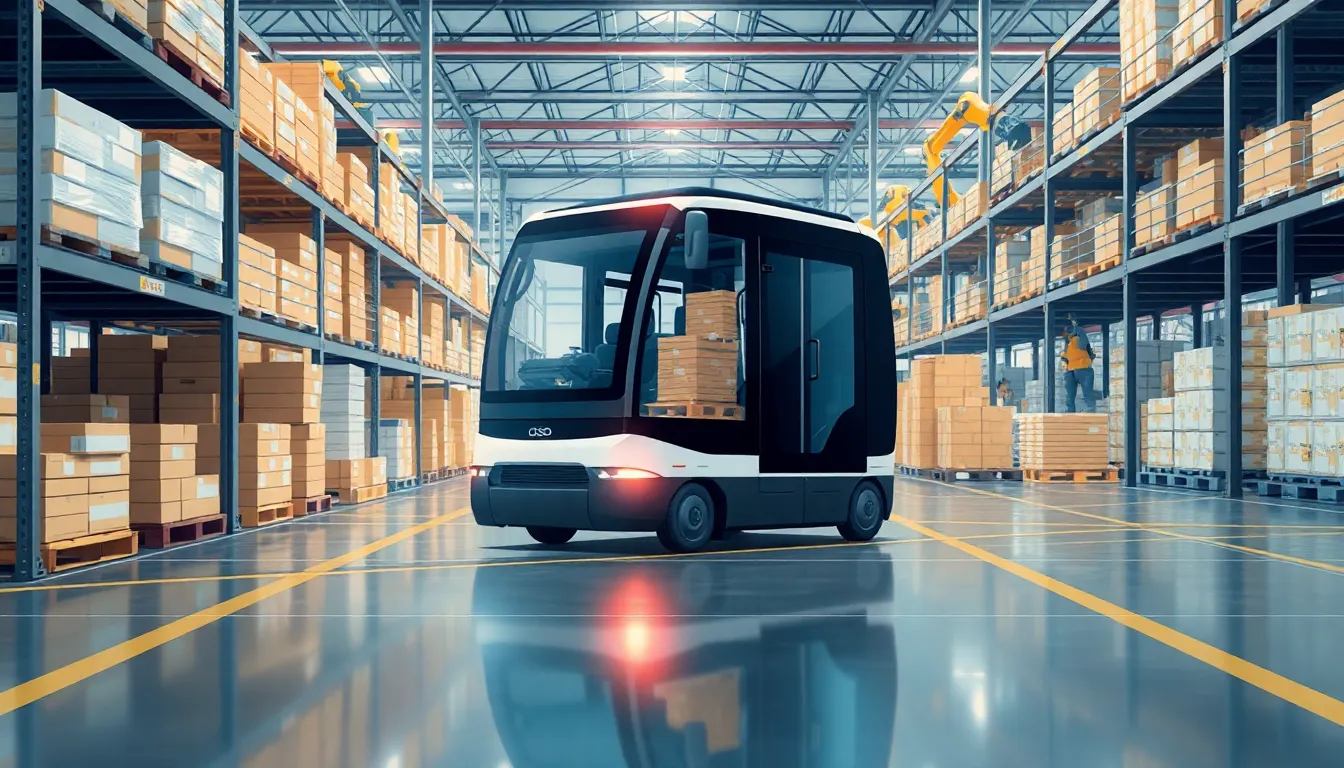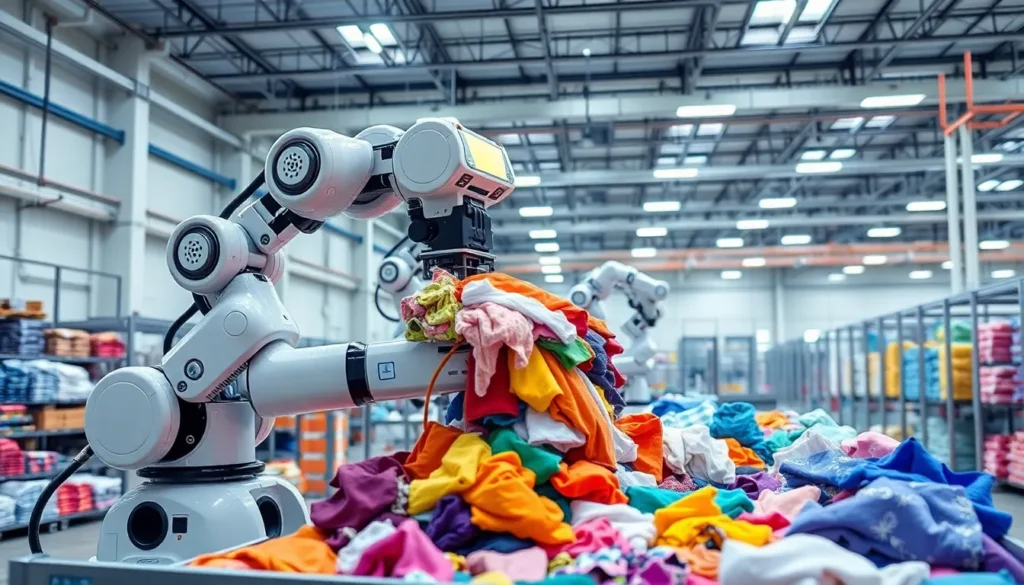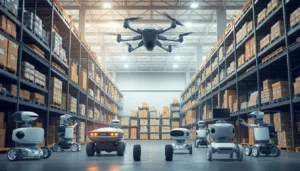In a world where clutter reigns supreme, sorting robotics swoop in like superheroes armed with algorithms and precision. Imagine a robot that can sort your laundry faster than you can say “where’s my other sock?” These mechanical marvels don’t just save time; they turn chaos into order with the grace of a ballet dancer and the efficiency of a caffeine-fueled intern.
Table of Contents
ToggleOverview of Sorting Robotics
Sorting robotics represent cutting-edge technology designed for optimizing organization tasks. These robots operate with advanced algorithms and sensors, allowing them to accurately identify and categorize items. Efficiency is a key attribute, ensuring rapid sorting that significantly saves time in various environments, such as warehouses and homes.
Robotic arms, equipped with machine learning capabilities, enhance the sorting process by adapting to new items and preferences. Many of these systems can handle diverse materials, including textiles, plastics, and metals. This versatility makes sorting robotics an effective choice across numerous industries.
Collaboration with other technologies increases their effectiveness. Integration with artificial intelligence permits continuous learning, enabling robots to refine their processes. Data collection and analysis further inform decision-making within sorting operations.
Workforces can benefit from adopting sorting robotics too. Company productivity improves while human labor shifts toward more complex tasks. Consequently, additional benefits include reduced human error and increased safety in potentially hazardous sorting environments.
As businesses face mounting demands for speed and precision, sorting robotics provide practical solutions to tackle these challenges. By streamlining the organization of items, these technologies assist in transforming clutter into orderly systems. Overall, the implementation of sorting robotics marks a significant advancement in efficiency and operational effectiveness.
Types of Sorting Robotics

Sorting robotics encompass various designs and systems tailored for specific tasks in organization and material handling. Understanding these types enhances knowledge about their applications and advantages.
Automated Guided Vehicles
Automated guided vehicles, or AGVs, navigate predetermined paths in environments like warehouses and factories. Many AGVs use sensors and cameras for real-time mapping and object detection. Efficiency improves as these vehicles transport items to designated locations, minimizing human intervention. They adapt easily to layout changes, ensuring smooth operations during shifts in workflow. AGVs reduce labor costs while increasing speed and accuracy in sorting tasks, making them a popular choice among businesses seeking scalable solutions.
Robotic Arms
Robotic arms play a crucial role in sorting automation through precision and dexterity. These robotic systems utilize advanced algorithms and machine learning for item identification and categorization. They excel in handling diverse materials such as textiles, plastics, and metals. Each arm operates smoothly, performing tasks like picking, placing, and sorting with minimal errors. Versatility allows robotic arms to adjust to unique sorting requirements across various industries. In environments that demand high throughput, these arms significantly enhance productivity and operational efficiency.
Applications of Sorting Robotics
Sorting robotics find applications across various industries, enhancing efficiency in managing tasks.
E-commerce Fulfillment
E-commerce warehouses rely on sorting robotics to streamline order processing. These systems sort items quickly and accurately, minimizing human error. They improve picking speeds, which increases overall fulfillment rates. Equipped with advanced cameras and sensors, robots identify products with precision, making them essential for inventory management. Companies recognize that robotics in sorting processes can significantly boost productivity while allowing human workers to concentrate on complex decision-making.
Waste Management
Sorting robotics play a crucial role in waste management systems. They enhance recycling operations by efficiently separating materials like plastics, metals, and organics. Robots equipped with sophisticated AI algorithms accurately classify waste, which leads to higher recycling rates and lower contamination levels. Organizations adopting sorting robotics benefit from reduced labor costs and increased sorting speed. Utilizing these technologies fosters a cleaner environment while supporting sustainability goals in waste processing facilities.
Advantages of Sorting Robotics
Sorting robotics deliver numerous advantages that enhance operational efficiency across various sectors. Speed represents a fundamental benefit, as these systems can sort items much faster than humans. Accuracy significantly improves as advanced sensors and algorithms minimize errors during the sorting process.
Cost reduction plays a vital role in the adoption of these technologies. Labor costs decline with automation, allowing organizations to allocate resources more effectively. Additionally, robotic systems require less supervision and maintenance, further decreasing operational expenses.
Flexibility defines the functionality of sorting robotics. Different models can adapt to multiple types of materials, such as textiles, plastics, and metals. They also integrate seamlessly with existing systems, facilitating smoother workflows in warehouses or production facilities.
Safety enhances in environments where sorting occurs. By minimizing human intervention in potentially hazardous tasks, organizations reduce the risk of workplace accidents. Robotics can handle heavy or sharp materials without the inherent dangers posed to human workers.
Productivity increases noticeably with the implementation of sorting robotics. By handling repetitive and monotonous tasks, these systems free employees to focus on more complex responsibilities. Enhanced efficiency leads to higher output rates, which directly contributes to overall business success.
Waste management improves as sorting robotics assist in recycling processes. Improved sorting accuracy contributes to higher recycling rates and lowers contamination levels, benefiting the environment. Organizations embracing these technologies achieve greener practices, aligning with sustainability goals.
Overall, the advantages of sorting robotics position them as essential tools for modern industries. Each benefit enhances operational performance, leading to improved outcomes and profitability.
Challenges in Implementing Sorting Robotics
Implementing sorting robotics presents several challenges that organizations must address. High initial costs often deter companies from adopting these technologies. Investments include hardware, software, and integration into existing systems.
Integration with current workflows poses another obstacle. Existing processes may not easily accommodate new robotic systems, requiring significant adjustments. Change management skills are critical to ensure staff adapts seamlessly.
Technological limitations also affect performance. Environmental factors, such as varying item sizes and shapes, can hinder robotic efficiency. Robotics often face difficulties with irregular or delicate items, necessitating advanced sensors and algorithms for effective sorting.
Workforce perception influences the deployment of sorting robotics. Employees may resist technology that threatens their job security. Clear communication regarding the benefits of automation can mitigate negative perceptions.
Maintenance and technical support represent ongoing challenges. Regular upkeep is crucial to ensure optimal performance, with potential downtime affecting productivity. Organizations must establish reliable support structures to address issues promptly.
Data privacy concerns arise in industries handling sensitive information. Organizations must implement robust security protocols to protect data processed by these systems. Compliance with industry regulations is essential in maintaining operational integrity.
Training personnel on new systems adds another layer of complexity. Staff must become proficient in operating and troubleshooting the robotics. Developing comprehensive training programs helps ensure staff is well-equipped for successful implementation.
Overall, these challenges necessitate strategic planning and investment for organizations considering sorting robotics. Addressing costs, integration, technology limitations, workforce perception, maintenance, data privacy, and training can lead to successful adoption and enhanced operational efficiencies.
Future Trends in Sorting Robotics
Emerging trends in sorting robotics focus on enhancing functionality and efficiency. Increased implementation of artificial intelligence drives advancements, allowing robots to learn from their environments and improve sorting accuracy. Machine learning models adapt to various materials, enabling faster identification and categorization.
Collaboration between sorting robotics and the Internet of Things (IoT) enhances real-time data sharing. Connected systems streamline operations by communicating with other machinery and databases, resulting in optimized workflows. Enhanced integrations lead to reduced downtime and improved response times in dynamic environments.
Sustainability becomes a central focus as organizations adopt sorting robotics. Increased efficiency in recycling processes supports environmental goals. Robots effectively separate recyclables, minimizing contamination and promoting a circular economy.
Customization also plays a significant role in future developments. Tailored solutions address specific industry needs, from e-commerce to manufacturing. Configurable robotic systems increase versatility, allowing seamless adaptation to various sorting tasks.
Enhanced safety measures form a priority as robotics technology advances. Improved sensor technologies enable better obstacle detection, promoting safer interactions between robots and humans. These innovations aim to reduce workplace injuries and enhance overall safety in sorting environments.
Finally, the collaborative workforce transforms with sorting robotics. Employees transition into more strategic roles while machines handle repetitive tasks. Empowered teams benefit from efficiency gains while focusing on complex problem-solving, ultimately leading to greater productivity across industries.
Sorting robotics are revolutionizing the way industries manage organization tasks. Their ability to enhance speed and accuracy while reducing labor costs positions them as invaluable assets in various sectors. The integration of artificial intelligence and IoT further amplifies their effectiveness by enabling real-time data sharing and continuous learning.
As organizations navigate the challenges of implementation, the long-term benefits become increasingly apparent. By embracing these technologies, businesses can streamline operations and promote sustainability. The future of sorting robotics looks promising, with ongoing advancements set to redefine productivity and efficiency in workplaces everywhere. Embracing this innovation will not only transform operational processes but also pave the way for a more strategic workforce.










